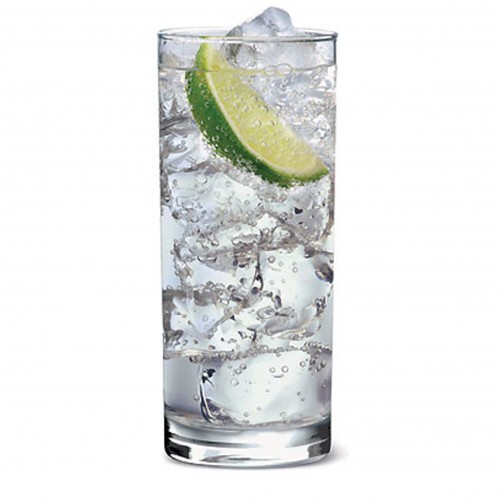Gin History, Development & Origin

From Dutch courage to William of Orange
British troops fighting in the Low Countries during the Thirty Years’ War were given ‘Dutch Courage’ during the long campaigns in the damp weather through the warming properties of gin. Eventually they started bringing it back home with them, where already it was often sold in chemists’ shops. Distillation was taking place in a small way in England, but it now began on a greater scale, though the quality was often very dubious. Nevertheless, the new drink became a firm favourite with the poor.
 The formation by King Charles I of the Worshipful Company of Distillers, where members had the sole right to distil spirits in London and Westminster and up to twenty-one miles beyond improved both the quality of gin and its image; it also helped English agriculture by using surplus corn and barley.
The formation by King Charles I of the Worshipful Company of Distillers, where members had the sole right to distil spirits in London and Westminster and up to twenty-one miles beyond improved both the quality of gin and its image; it also helped English agriculture by using surplus corn and barley.
When King William III – better known as William of Orange – came to the English throne in 1689, he made a series of statutes actively encouraging the distillation of English spirits. Anyone could now distil by simply posting a notice in public and just waiting ten days. Sometimes gin was distributed to workers as part of their wages and soon the volume sold daily exceeded that of beer and ale, which was more expensive anyway.
Licensed to sell
Little nips of whisky, little drops of gin, Make a lady wonder where on earth she’s bin- Anon
In 1729, an excise licence of £20 was introduced and two shillings per gallon duty was levied. In addition to which, retailers now required a licence. This almost suppressed good gin, but the quantity consumed of bad spirits continued to rise.
In 1730 London had over 7,000 shops that sold only spirits. Daniel Defoe wrote of “the prodigious number of shopkeepers whose business is wholly and solely the selling of spirits”. In certain areas, spirits were sold on average from one private house in four.
 The abuse of alcohol by the poor became a major problem. Smollett, the 18th century Scottish novelist wrote: “In these dismal caverns (‘strong water shops’) they (the poor) lay until they recovered some of their faculties and then they had recourse to this same mischievous potion”. Lord Hervey declared: “Drunkenness of the common people was universal, the whole town of London swarmed with drunken people from morning till night.” William Hogarth in his ‘Gin Lane’, an engraving of about this period, portrays a scene of idleness, vice and misery, leading to madness and death.
The abuse of alcohol by the poor became a major problem. Smollett, the 18th century Scottish novelist wrote: “In these dismal caverns (‘strong water shops’) they (the poor) lay until they recovered some of their faculties and then they had recourse to this same mischievous potion”. Lord Hervey declared: “Drunkenness of the common people was universal, the whole town of London swarmed with drunken people from morning till night.” William Hogarth in his ‘Gin Lane’, an engraving of about this period, portrays a scene of idleness, vice and misery, leading to madness and death.
The Gin Riots
The problem was tackled by introducing The Gin Act at midnight on 29 September 1736, which made gin prohibitively expensive. A licence to retail gin cost £50 and duty was raised fivefold to £1 per gallon with the smallest quantity you could buy retail being two gallons. The Prime Minister, Sir Robert Walpole, and Dr. Samuel Johnson were among those who opposed the Act since they considered it could not be enforced against the will of the common people. They were right. Riots broke out and the law was widely and openly broken. About this time, 11 million gallons of gin were distilled in London, which was over 20 times the 1690 figure and has been estimated to be the equivalent of 14 gallons for each adult male. But within six years of the Gin Act being introduced, only two distillers took out licences, yet, over the same period of time, production rose by almost fifty per cent.
Respectability, high quality and patronage
The Gin Act, finally recognised as unenforceable, was repealed in 1742 and a new policy, which distillers helped to draft was introduced: reasonably high prices, reasonable excise duties and licensed retailers under the supervision of magistrates. In essence this is the situation which exists today.
These changes led to more respectable firms embarking on the business of distilling and retailing gin and it became the drink of high quality, which it has since remained. Many companies established themselves as well-to-do manufacturers, often becoming patrons for major enterprises; one such was the sponsorship of the attempt to discover the North West Passage 1829-33: the attempt failed, but the expedition did establish the true position of the North Magnetic Pole.
Gin had been known as ‘Mother’s Milk’ from the 1820s but later in the century it became known as ‘Mother’s Ruin’, a description perhaps originating from the earlier ‘Blue Ruin’ of the prohibition era in the previous century.
From gin palaces to high society
 By this time the battle for trade was hotting up between the beer shops and the gin shops. Following the 1820 ‘Beerhouse Act’, beer was sold free of licensing control and 45,000 beer shops – aimed to be the cosy homes from home – had appeared by 1838. Spirit retailers still required licences and, to compete with the beer shops, they devised the ‘gin palaces’ which first appeared about 1830. These were designed to be an escape from home. As home for the poor – who continued to be gin’s main supporters – was often a sordid slum, the gin palace was large, imposing and handsome and even luxuriously furnished. By the 1850s there were about 5,000 such places in London and Charles Dickens describes them in his ‘Sketches by Boz’ in the mid-1830s as “perfectly dazzling when contrasted with the darkness and dirt we have just left.”
By this time the battle for trade was hotting up between the beer shops and the gin shops. Following the 1820 ‘Beerhouse Act’, beer was sold free of licensing control and 45,000 beer shops – aimed to be the cosy homes from home – had appeared by 1838. Spirit retailers still required licences and, to compete with the beer shops, they devised the ‘gin palaces’ which first appeared about 1830. These were designed to be an escape from home. As home for the poor – who continued to be gin’s main supporters – was often a sordid slum, the gin palace was large, imposing and handsome and even luxuriously furnished. By the 1850s there were about 5,000 such places in London and Charles Dickens describes them in his ‘Sketches by Boz’ in the mid-1830s as “perfectly dazzling when contrasted with the darkness and dirt we have just left.”
In the mid-1830s the temperance movement started. Whilst it failed to make a big impact, it did encourage much debate on drink which was still a problem. Thomas Carlyle wrote of gin as “liquid madness sold at tenpence the quartem”. By 1869 this led to an Act licensing the sale of beer and wine (spirits were still licensed). Two years later a further Act was introduced which would have halved the number of public houses in the country, but public opinion was outraged. One bishop stating in the House of Lords that he would “prefer to see all England free better than England sober” and the act was withdrawn.
As reforms took effect, so the gin production process became more refined. So gin evolved to become a delicate balance of subtle flavours, and began its ascent into high society.

+ There are no comments
Add yours